In 1010, the king Ly Thai To decided to move the capital from Hoa Lu – a military capital to Thang Long – the central of the Red River delta. His most significant historical decision of the century created a new Vietnam. For that event, many craftsmen moved to there, firstly for the need of construction. Later on, appealed by its convenience, they gradually settled their lives around. A lot of traditional craft villages were formed and some ones are introduced in this article.
PART 4: TRADITIONAL CRAFT VILLAGES IN HANOI
Visiting Hanoi – the 1000-year civilization’s land, not only are you excited about ancient pagodas, but you also will be delighted with ancient traditional villages. Its development had improved both physical and spiritual life of Hanoi people. Thank to their diligence and handiwork, they created various sophisticated products to meet both local and neighborhoods nearby. Though those craft villages have recently faded away by modern facilities, some looks almost exactly as it did in the past.
Dai Yen – The first medicinal herb village

Being the sole medicinal herbal village in Hanoi, Dai Yen had specialized in supplying locals with a lot of medicine for 1000 years. In the past, villagers mainly lived on making herbal remedies. They used to be proud of being a member in Dai Yen whenever they went out.
It is believed that the job is suitable for women because of its gentle feature. For this reason, women are the majority making Vietnamese remedy. Here and there, you still see some women living in Dai Yen village with various kinds of Vietnamese medicine going around for a living when you have an opportunity to visit Hanoi. This job was closely attached to childhood in the village. They were early been acquainted with every medicinal plant under their parents’ upbringing. Therefore, you do not surprise to see that children go their home away to seek herb for their parents when they are merely about 8 years old.
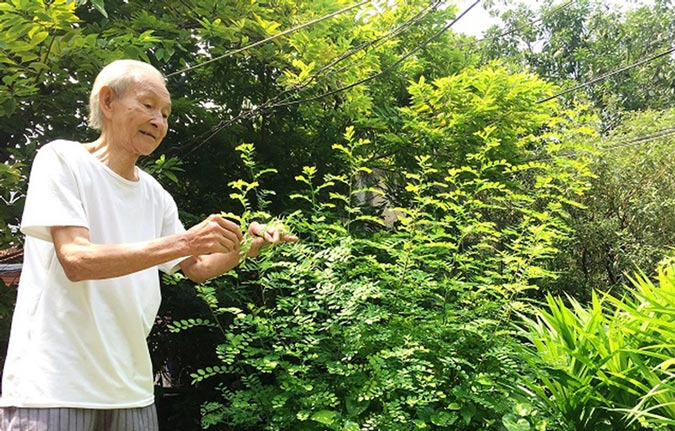
Remarkably, they checked patients’ disease with feeling the pulse and symptoms thank to their experience. Not everyone can find out patients’ problem through tender method traditionally. It has unfortunately been faded away with time and economic development. Nowadays, very few remained of Dai Yen making the traditional medicine as a living job.
Dinh Cong – The traditional Jewelry village
Dinh Cong, an ancient village, was well known about making jewelry making in Hanoi in the past. According to legend, there were three cousins in Tran family knowing well about making jewelry craft. They reached its peak of development due to their talent and diligence. Their product used to be popular about its sophistication. To keep that job alive, they open-mindedly taught to Dinh Cong villagers. After many ups and downs, that jewelry trade really had its hour of glory and widely passed on from generation to generation at Dinh Cong village.
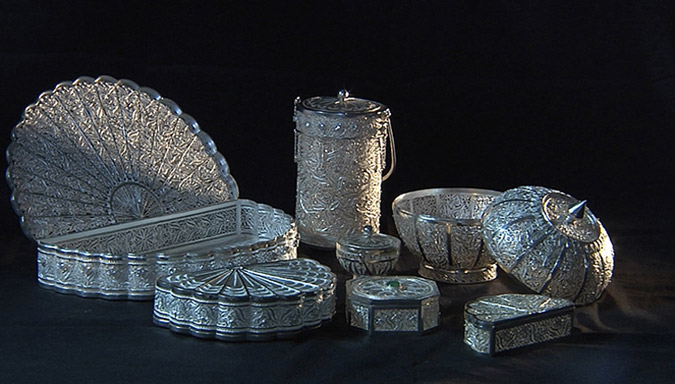
Those who are highly persistent and super meticulous are correspondent to jewelry trade, because it requires a precise mind to check of silver minute details rightly then make in different shapes as decorations. Hence, the delicacy of gold and silver exactly inspires jewelers to make masterpieces about patterns and daily products in their lives.
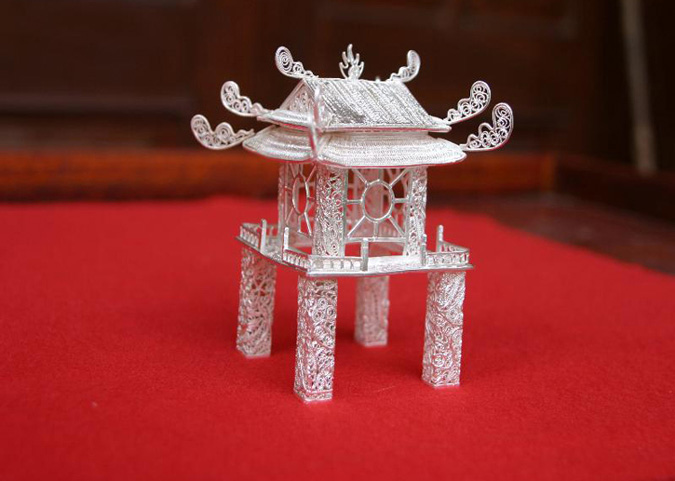
Dinh Cong was the most famous traditional village for making jewelry prior to the beginning of the twentieth century. Reluctantly, this trade had gradually faded away since 1964 because of many ups and downs of historical sequence. At present, some original jewelry goods of Dinh Cong has well stored and displayed in some shops at Hang Bac Street, Old Quarter.
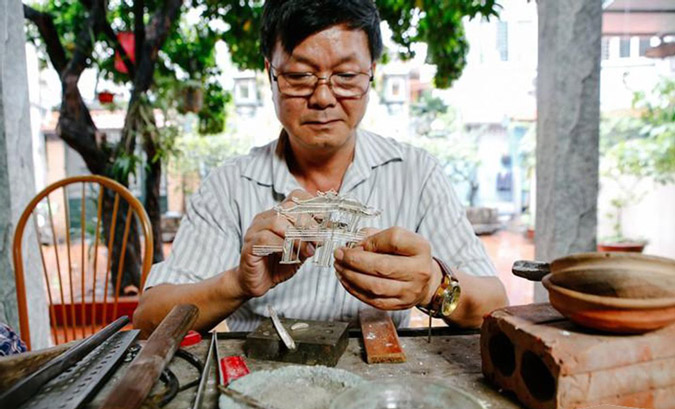
Visiting Dinh Cong nowadays, you must be lucky to rarely find out few families making this traditional trade. They have hard maintained by their passion and love of beauty on silverware in details. I just hope that younger generations of Dinh Cong are aware of preserving the traditional trade and new products will be made one day.
Ngu Xa – The Famous Village For Bronze Casting
Located at the shore of Truc Bach Lake on the western of Hanoi, Ngu Xa village has had a long and eventful history dating back 500 years ago. According to historical records, people who were good at bronze casting from 5 ancient traditional villages partially belonging Hung Yen and Bac Ninh province at present, came Thang Long – ancient Hanoi for enterprising in 15th- 16th century. They re-settled and a new village – Ngu Xa was born to make bronze coin and ritual objects. Ngu Xa means five villages as the way to remember their native countryside.
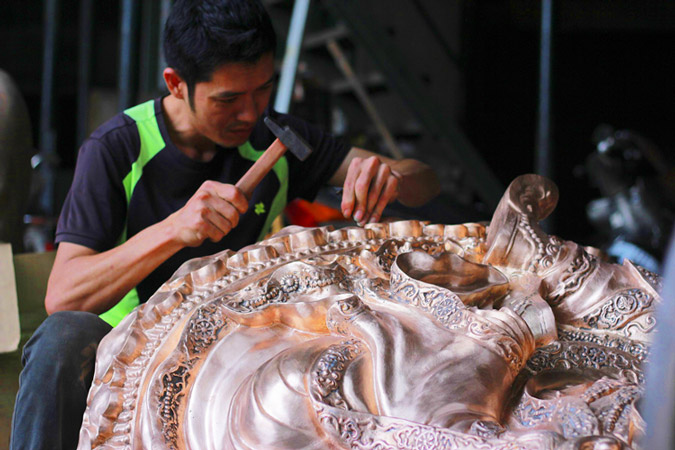
The job was one of four best in ancient Hanoi. It strictly requires skillful hands, delicate eyes and meticulousness which focused on villagers of Ngu Xa. The traditional trade has been handed down to posterity with important secrets of bronze casting process, namely making mold, melting copper down, shaping with melted copper.
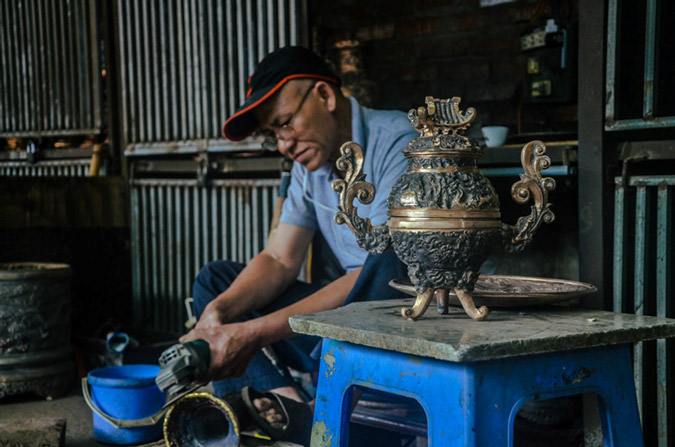
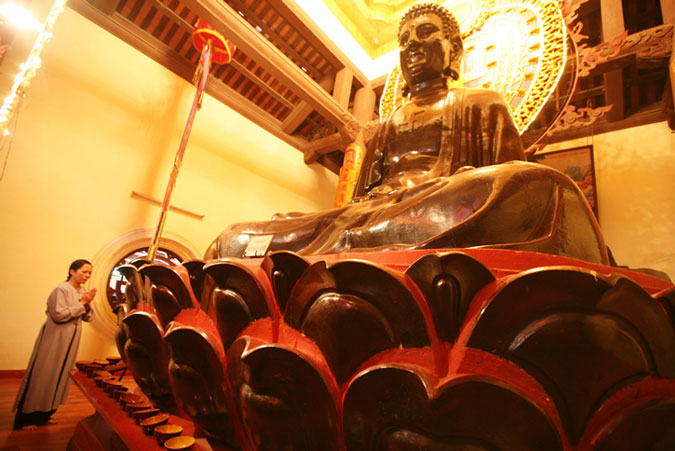
Most of copper Buddha statues in numerous temple and pagodas in the North of Vietnam were initially born from Ngu Xa. Especially, the Amitabha Buddha statue in Thien Quang Pagoda being 3.95m in height is worth sharing because of its nearly perfect design and specifications. In addition, Quan Thanh Temple, one of the four crucial temples of Hanoi is a sacred place to worship the statue of Tran Vu known as one of the principal deities in Taoism which is made of black copper. It is also the worthy of beholding. Even valuable, the bell is being displayed at One Pillar Pagoda which is unique in architectural style in Vietnam and so on.
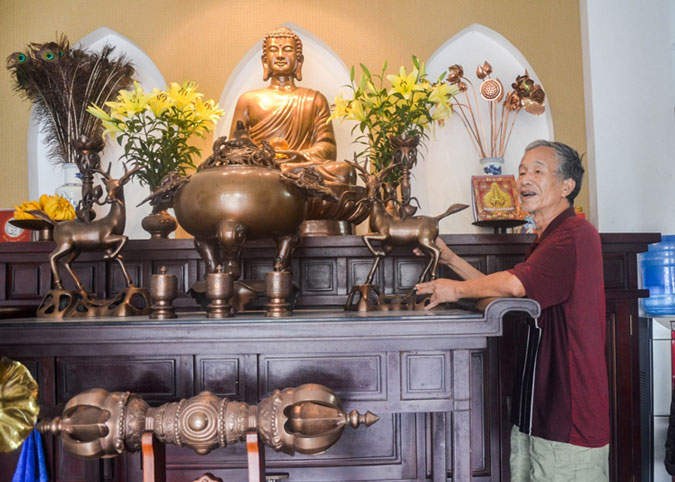
The aura of bronze casting at Ngu Xa was not to last nowadays and has turned out a busy city where you cannot hear the constant hammering of the blacksmith, except the noise of traffic. Few families have maintained this job, but in smaller size with several ritual objects.
Bat Trang – The oldest Ceramic Village
For 600 years ago, Bat Trang was formed. As a matter of fact, that traditional village is about 15km far from the center of Hanoi nowadays and belongs to Gia Lam district. Products are not only high value items, but are also highly variable in terms of quantity has established a cross-national reputation. Displaying in various pagodas and temples, ritual objects which have originally remained until today show the state of being stable and valuable of Bat Trang pottery products.
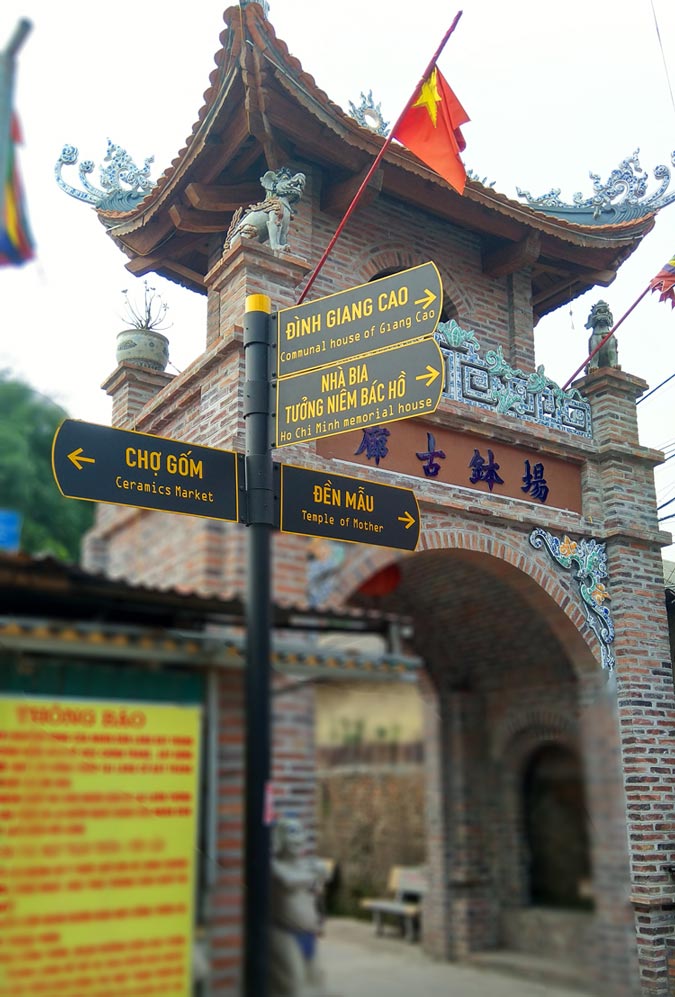
In the past, people earned a living by making pottery whose material is mainly from clay. A high quality pottery requires a numerous deposit of white clay which was gathered from some specific villages nearly namely Co Dien Village in Vinh Phuc and Dau village in Bac Ninh province. The presence of Bat Trang pottery was in daily from valuable items to household such as paintings, censer, mugs and bowls…
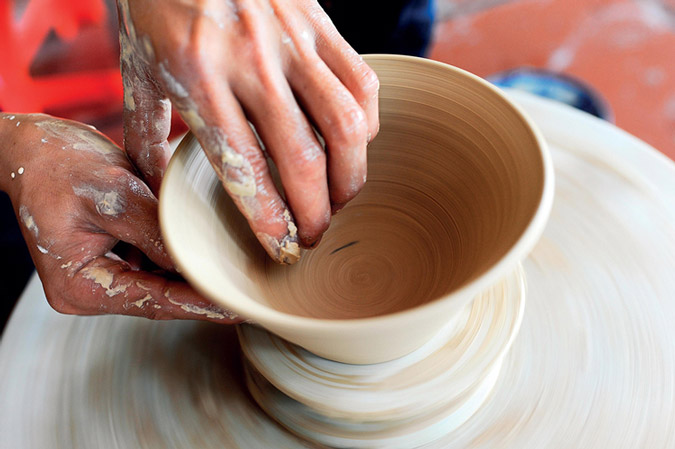
Nowadays, it attracts both Vietnamese and foreigners. An intelligible matter is that a tour taking tourists to Bat Trang Village is popularly operated by most of travel companies based in Hanoi. It surely does not damage your wallet when you visit that traditional village and discover a specialty of locals there. The difference is white glaze pottery which will be clearly shown and compared with three famous pottery villages in the Northern; even you will know that Bat Trang used to be famous for its unique glazes… Just a matter of time, visit even once!
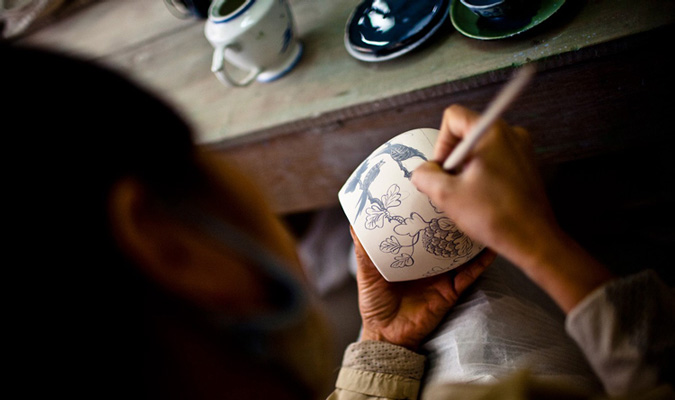
At present, products of Bat Trang have conquered many hearts of not only domestics, but also travelers around the world. That traditional village owns a sense of distinction in material and glazes which some ashamedly equates with other potteries in the world. It is also known as a tourist attraction which benefits tourists a sense of being native, original and Vietnamese.
If you like my articles (and even if you don’t), or have ideas for topics you’d like to enjoy in the next time, email me know what you think about. And rest assured I always strive to improve the coming articles’ quality.

Hey, checking out Hbetvn.net. Hoping for a good experience here. Customer support better be responsive! Gonna give it a shot and see how it goes. Good luck to me (and you)! Check out Hbetvn: hbetvn